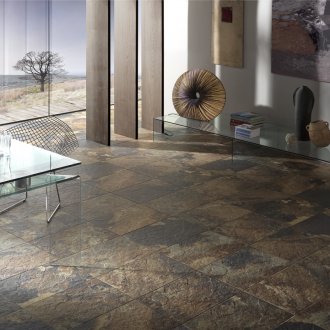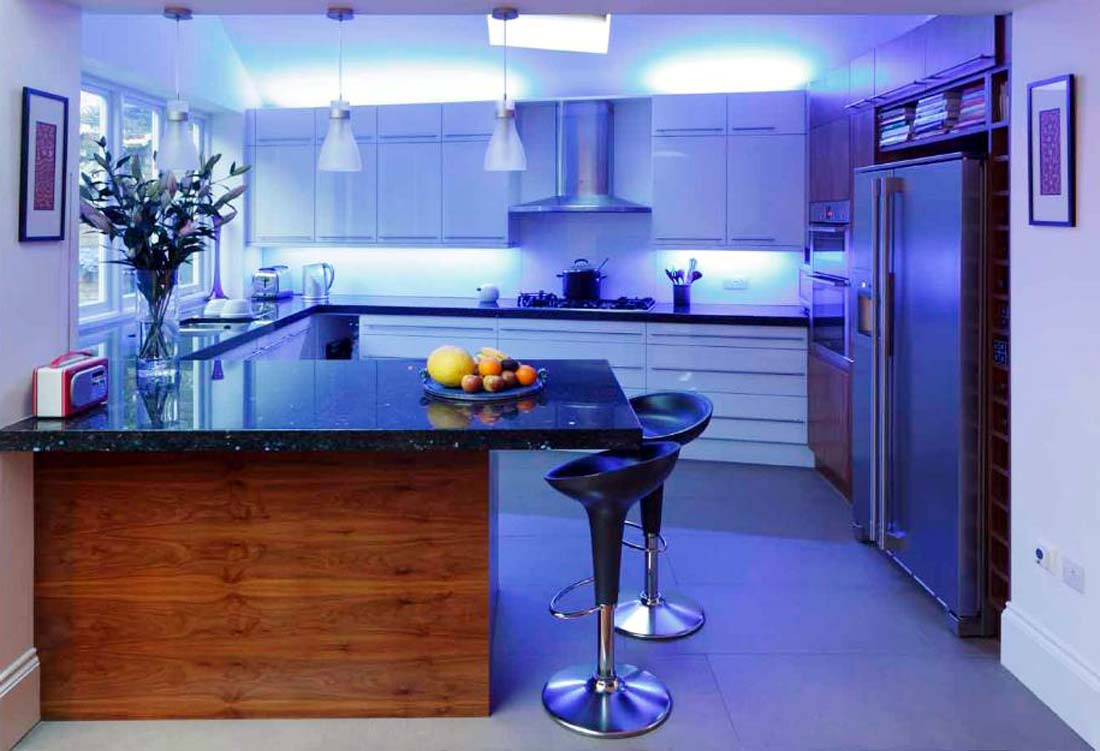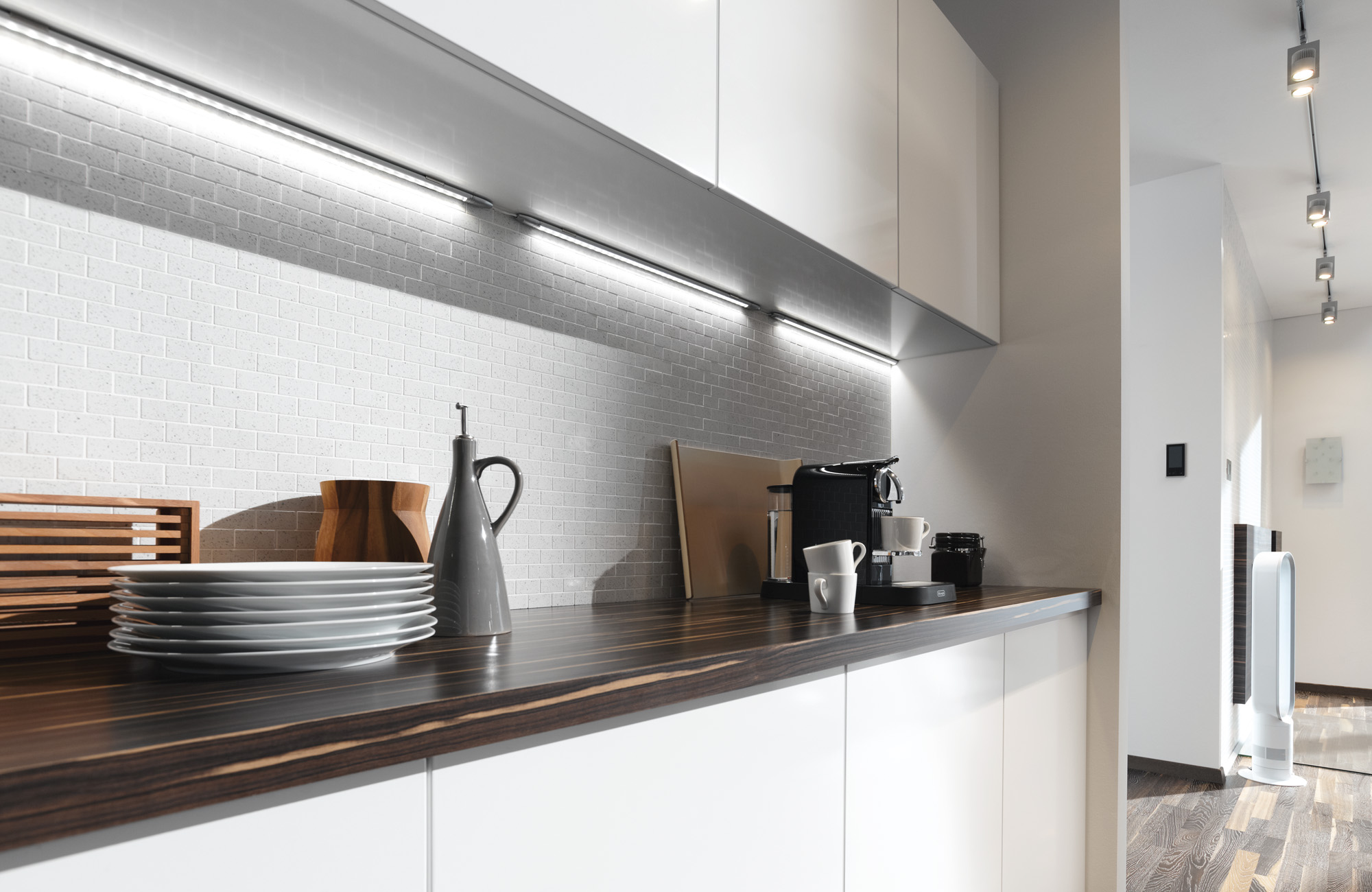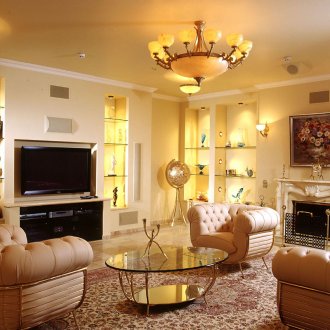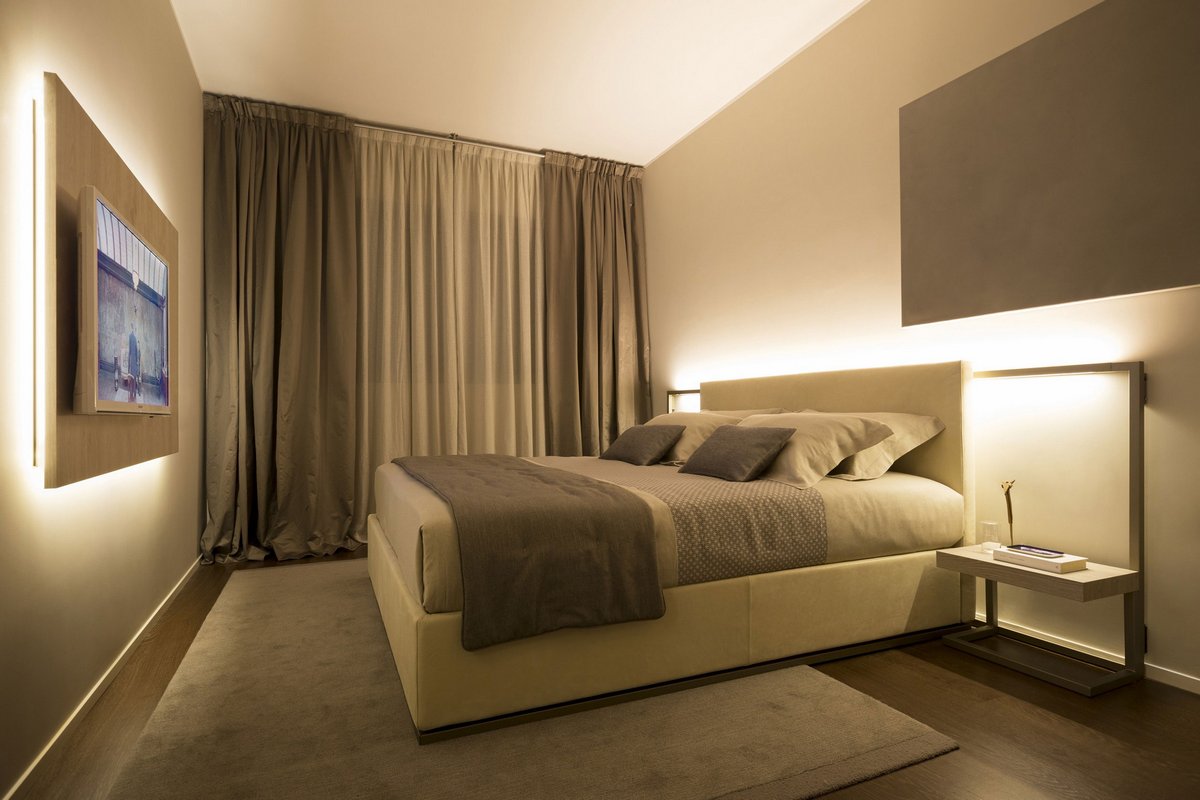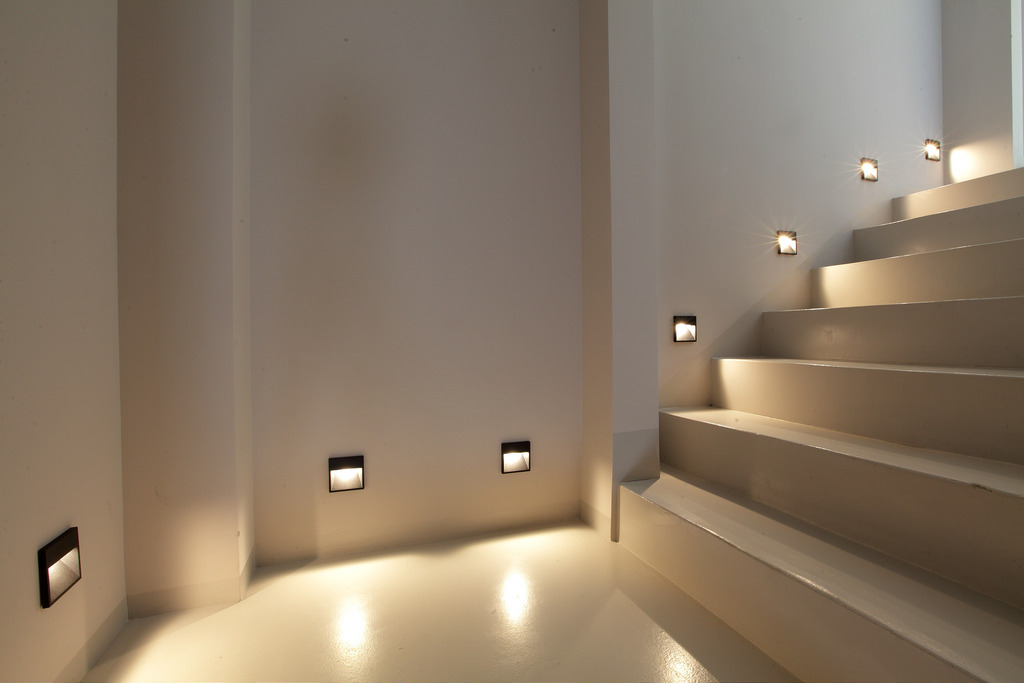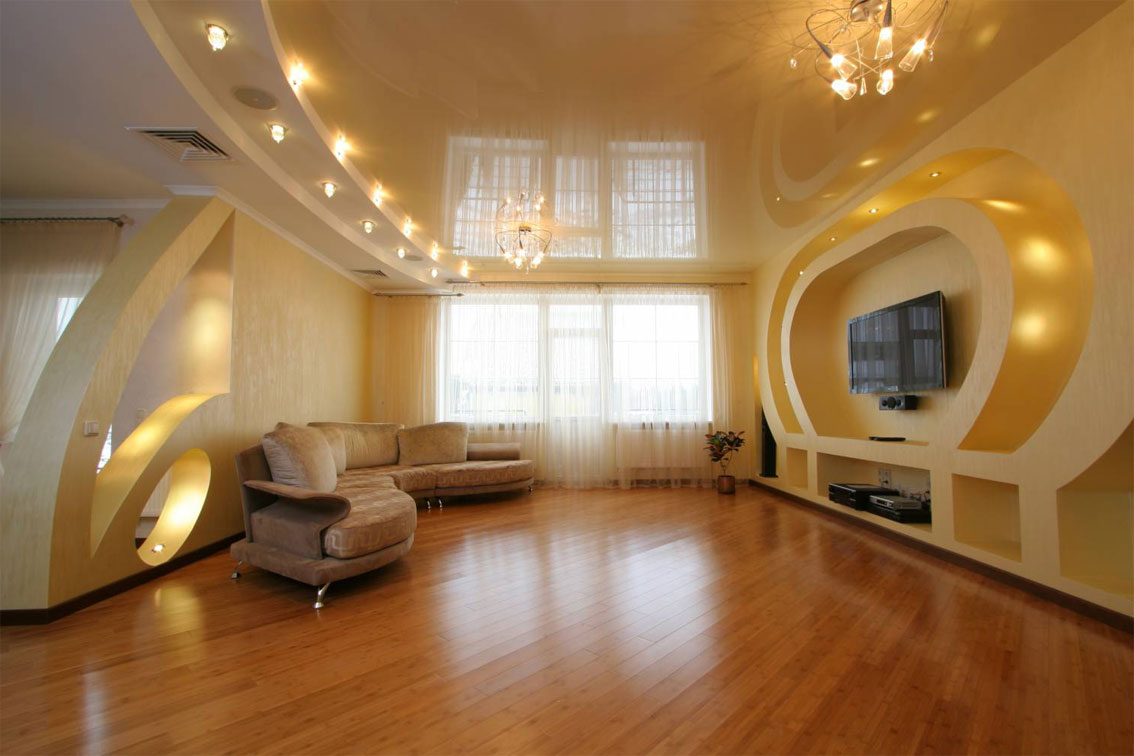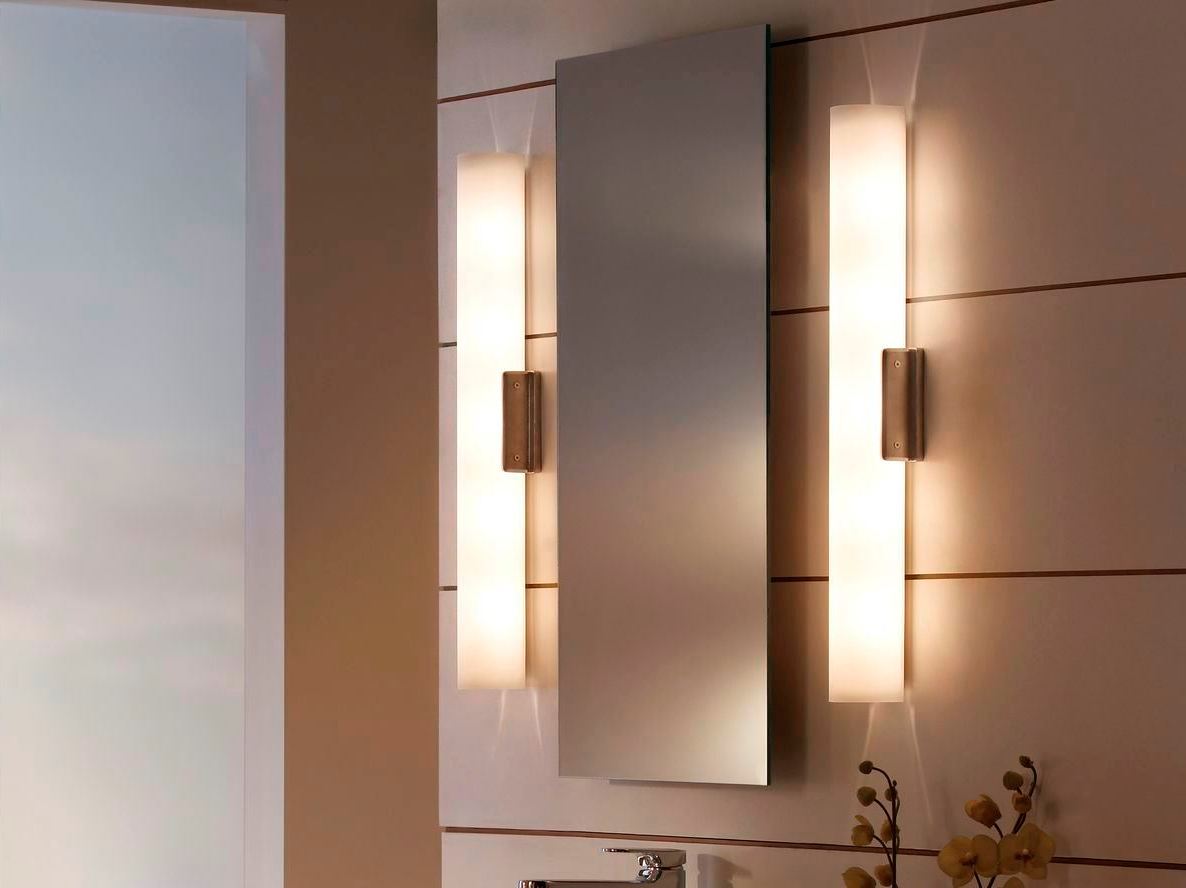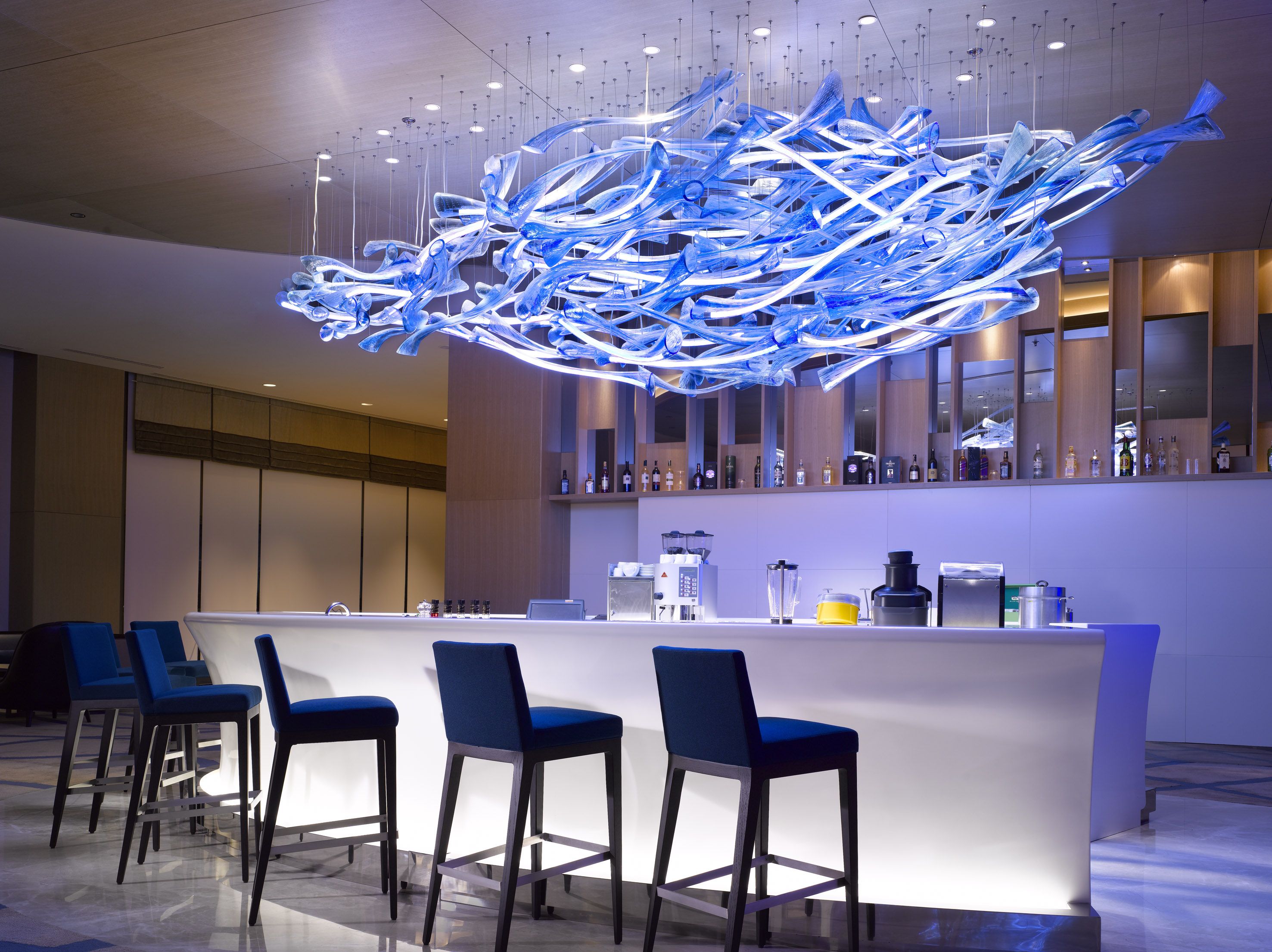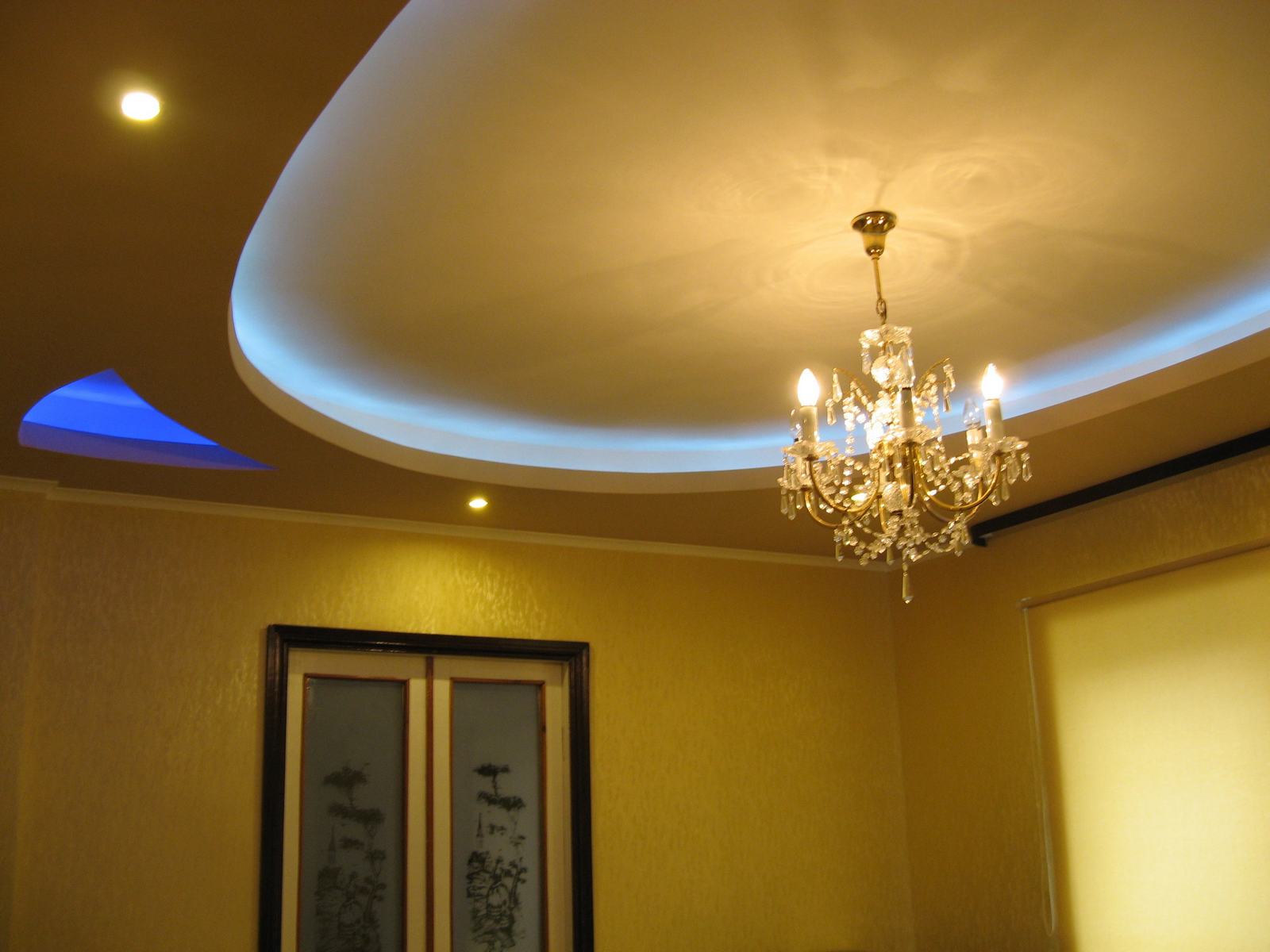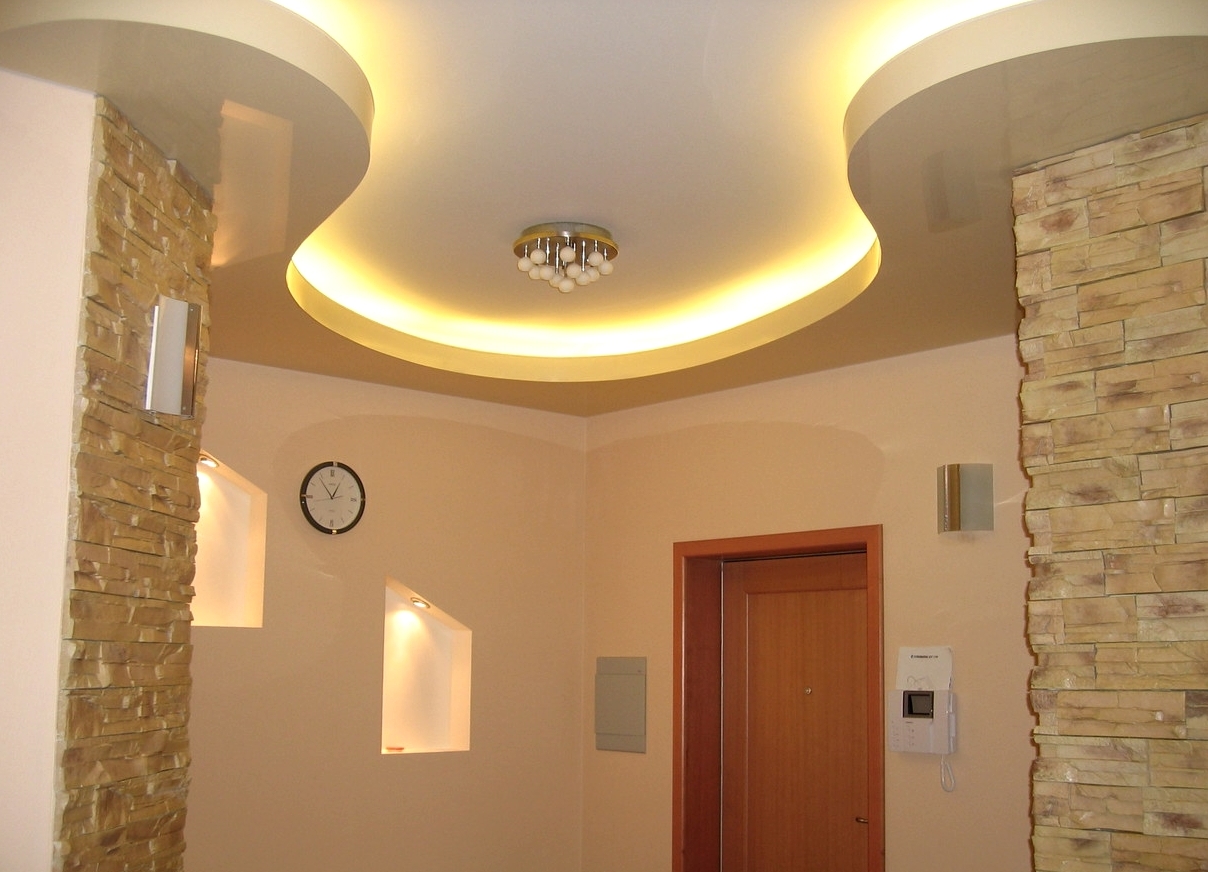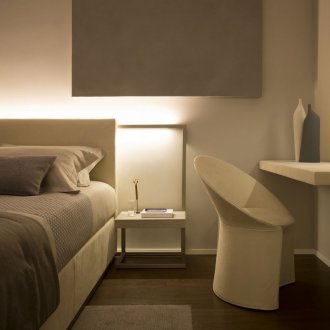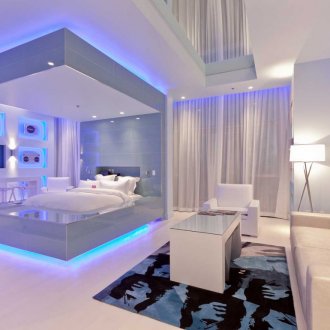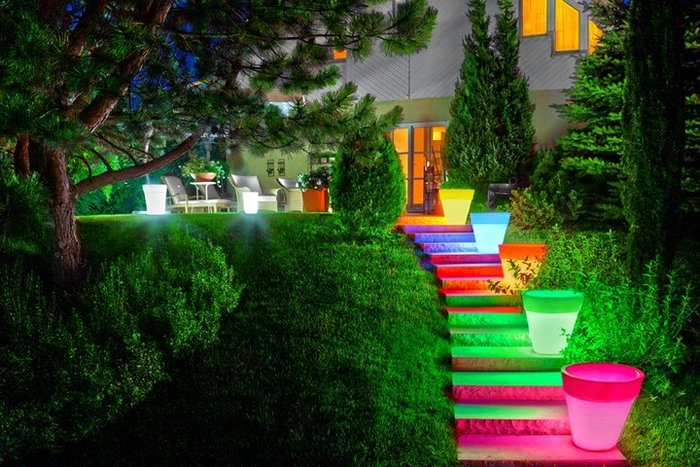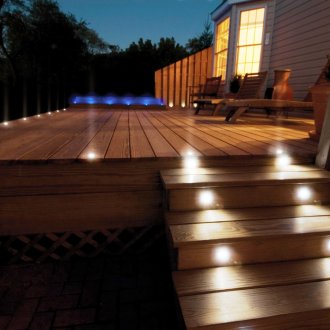LED lamps for the home: features of choice, advantages and disadvantages (26 photos)
Content
LED lamps - a new stage in the development of lighting technology. Knowing their basic characteristics will help you choose the best lighting.
The cost of an LED bulb is several times higher than the price of a conventional incandescent bulb. But when calculating the savings that can be obtained in the future, more and more people prefer this type of lighting. A few years ago, LED lamps were rare, but now they can be purchased in any light salon. Consider how to choose LED lamps for the home, their characteristics, varieties and main advantages.
Principle of operation
LEDs have long been used in electronics, in the dashboard of cars and various indicators. But with the development of technology, they began to be used for lighting the room.
In such a bulb, alternating current is converted into direct current with minimal loss of heating, which makes it more economical and safe. That is why this type of lighting device is superior to others and, according to experts, will gradually crowd out its competitors.
Benefits
The popularity of LED lamps is due to their advantages over other types of lighting products. These include:
- Profitability. The brightness of a 10 W LED lamp is equivalent to the brightness of an incandescent bulb, the power of which is 100 watts.
- Security. LEDs do not emit ultraviolet light, which makes them safer for the retina.
- Low heat dissipation. LEDs give little heat during operation, so they do not heat the air in the room.
- Durability. LED light bulb can last up to 50 thousand hours. Therefore, if you use it for about 5 hours a day, then the service life can be more than 20 years.
- Strength and lightness. The lamps are lighter and less fragile, which further increases the service life.
- Quick warm up. It takes less than a second to warm up a light bulb after turning it on.
- Ecological cleanliness. The composition does not include mercury, which makes LEDs safer compared to energy-saving lamps.
disadvantages
Despite the undeniable advantages of this type of lighting, there are a number of disadvantages that must be taken into account when choosing lighting devices. These include:
- High price. One of the significant disadvantages is the high price.
- The specific spectrum of the glow. Reading, sewing and other painstaking work with the LED light bulb causes the eyes to quickly get tired. However, modern lamps are of higher quality, so the spectrum of the glow practically does not differ from other types of lighting.
- A large number of fakes. This technology is quite expensive, so there are a lot of low-quality fakes on the market. Therefore, you should buy LEDs only in specialized stores.
- Special fixtures. To obtain optimal lighting, it is necessary to use light bulbs whose power is not higher than the allowable ones in lamps.
Features of choice
LEDs are quite expensive technology, so you need to know how to choose such lighting so that they last a long time and completely satisfy the consumer. Consider the main characteristics of LED lamps, which should be taken into account when choosing.
Light flow
The main characteristic of any light bulb is its brightness. In an incandescent lamp, the brightness indicator is determined on the basis of power, because the brightness of the light flux directly depends on the power. In LEDs, there is no direct relationship between these indicators. LED lamps are characterized by a current of light, the measurement of which occurs in lumens.
The easiest way to choose a light bulb by power is to use a 1: 8 ratio. This means that the brightness of an incandescent lamp is 8 times lower than the LED. Therefore, if you need to change an incandescent lamp whose power is 60 watts, this indicator should be divided by 8. It turns out that the required power of the LED bulb should be 7.5 watts.
Emission spectrum
To determine the color of lighting, the concept of "color temperature" is used. It is measured in degrees Kelvin. The lower this indicator, the warmer the light. If an incandescent bulb has an indicator of about 3000K, then cold light is about 6000K.
The light most pleasant to the eye is yellowish, like an incandescent lamp. It is optimal in the evening, best suited for reading and hard work. Initially, LED lamps were only available in cool shades. However, with a combination of LEDs of different colors, it is possible to obtain light in a wide range of colors. This increases the cost of lighting compared to bulbs in which white light is obtained by coating the blue LED with a phosphor.
Some LED luminaires with warm light also have a blue spectrum. Therefore, they are not recommended for use in the bedroom, children's room or other rooms in the warm time of the day. They are best suited for offices and other workrooms. The blue spectrum increases attention and reaction speed, which has a positive effect on disability. However, at night, the blue spectrum has a negative effect on the human body.
For the children's room and bedroom, it is recommended to choose lighting in which the blue spectrum is specially filtered. Information on this can be found on the packaging.
Color rendering index
An important indicator that gives the concept of how much other colors are visible in the light of this lamp. The index can have a score of 0-100. A higher indicator indicates better color rendering. In an incandescent lamp, this indicator can reach 99. For a comfortable perception of colors, the indicator should be at least 80. Most LED lamps provide this indicator.
Ability to control brightness
Modern LEDs have the function of controlling the brightness of the light. The cost of such lamps is much higher, which must be considered when choosing them.
Light angle
LEDs are best suited for spot lighting. The directivity angle is only about 120 degrees. Therefore, it is impossible to hang just one such lamp on the ceiling and expect high-quality lighting of the entire room.
Materials and Design
Particular attention must be paid to the base. It must be firmly fixed, and its marking must match the cartridge. Powerful lamps have a large radiator, which should be made of ceramic, aluminum or graphite. It should bask in the range of 50-70 degrees and not be typesetting.
Base classification
The choice of LED lamps for the home, first of all, is to choose the right base. The cap is part of the lamp, which provides its contact with the power. In LED bulbs, it can be pin and screw. The first of them is indicated by the symbol "G", and the second by "E".
The main types of socles:
- E27. A classic carving base. Suitable for those luminaires that are also compatible with incandescent and energy-saving lamps.
- E14. Used for modern fixtures. Most often with such a cap are produced lamp type "candle".
- GU10. This base is used for installation in kitchen hoods or built-in lamps for the work surface.
- GU5.3. Such bulbs can completely replace halogen bulbs.
- G9 Available to replace halogen lamps.
- G4 It is used in small lamps, for example, to highlight paintings.
Life time
Manufacturers indicate the life of their lamps from 20 to 50 thousand hours. However, this indicator is practically impossible to achieve in practice. But the lower the quality of materials and assembly, the lower will be the final service life. Chinese-made low-quality bulbs can burn out after several months of service.
To calculate the life of the LEDs, it is necessary to focus not on the operating time, but on the declared number of turns. For example, if 20 thousand inclusions are declared, and the light in the room turns on 20 times a day, then the bulb will last about three years.
Ripple
A high-quality LED lamp should not pulsate. If the build quality is poor, the lamp may create a pulsating light. Although it is not visible to the human eye, it can lead to nervous strain, rapid fatigue and tearing of the eyes.
To check the light bulb for pulsation, you should look at it through the camera of a mobile phone. If the image blinks, this lamp should not be bought.
Tips for choosing LED bulbs
A wide selection of varieties of LED lamps can perplex every customer. A few tips will help you make an informed choice:
- Do not buy LED lamps from an unknown manufacturer. Marking should be indicated not only on the box, but also on the lamp housing.
- If you need to purchase lamps for home ceiling in the bedroom or children's room, give preference to European manufacturers.
- You need to buy such products in specialized stores that can provide quality certificates. This will protect against fakes.
- A quality light bulb cannot be cheap. In this case, low-quality or even toxic materials are used for its production. Long-lasting products will have to pay more.
Before buying an LED light bulb, you need to weigh all the pros and cons. For lighting the bedroom and children's room, you can use only lighting without a blue spectrum, which will cost more. And for offices and offices, LED bulbs are suitable for a lower price. This type of lighting is promising. However, at the moment, only the products of well-known manufacturers have high quality and the indicated indicators of durability and efficiency.

